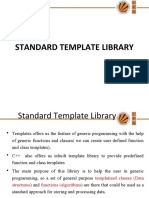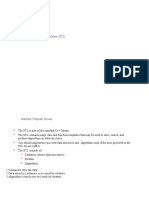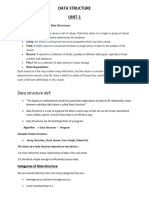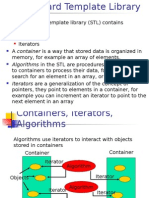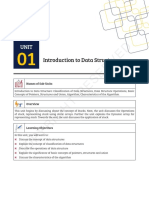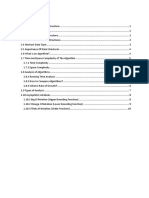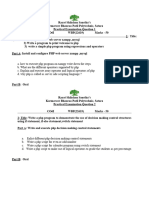0% found this document useful (0 votes)
16 views12 pagesWeek 8 - STLs I
The document provides an overview of the C++ Standard Template Libraries (STL), focusing on algorithms, data structures, and their components. It discusses sequential containers such as arrays, vectors, and deques, detailing their properties, operations, and comparisons. The document emphasizes the importance of selecting appropriate data structures to optimize program performance and efficiency.
Uploaded by
lujainhesham04Copyright
© © All Rights Reserved
We take content rights seriously. If you suspect this is your content, claim it here.
Available Formats
Download as PDF, TXT or read online on Scribd
0% found this document useful (0 votes)
16 views12 pagesWeek 8 - STLs I
The document provides an overview of the C++ Standard Template Libraries (STL), focusing on algorithms, data structures, and their components. It discusses sequential containers such as arrays, vectors, and deques, detailing their properties, operations, and comparisons. The document emphasizes the importance of selecting appropriate data structures to optimize program performance and efficiency.
Uploaded by
lujainhesham04Copyright
© © All Rights Reserved
We take content rights seriously. If you suspect this is your content, claim it here.
Available Formats
Download as PDF, TXT or read online on Scribd
/ 12



